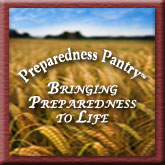With the latest interest in volcanism triggered by the unpronounceable Icelandic volcano and the continuing eruptions in Hawaii, I thought I would write about the subject. Well who the heck am I to write about these? I do have some credentials based on my education as a geochemist specializing in volcanic terrains. My interests were more specifically in the resulting metallic ore deposits, but to understand the ores you really need to understand the creative mechanisms, so I spent a lot of time on volcanoes. Here’s the short version of everything you need to know about volcanoes:
1. The earth is made of thin plates of rock floating on a molten core. If you scale the earth down to the size of a basket ball, its consistency would be more like jello than like what we consider rock. There are a bunch of different layers, but the main point is that the surface we live on, called the crust, is sort of like the scum on top of the tomato soup if you let it boil without stirring. Oh, and the crust can move around like the scum, too.
2. There are two types of crust: continental which is lighter and oceanic which is heavier. This all has to do with composition, density, etc.. Think of it as oil and water, with the oil floating above the water. Continental crust will ‘float’ on top of the oceanic crust –or try hard to--if the two are in the same place at the same time.
3. Plate tectonics, also called ‘continental drift’ by some, has been proven to be true or at least the evidence is pretty overwhelming. The plates are in motion, crashing into each other at lightning speeds from a millimeter a century to several centimeters a decade.
4. Just like differential speed being the cause of may accidents on the highway, differential plate movement causes crustal collisions that have devastating consequences played out slowly over millions of years. These consequences include volcanoes and their eruptions, earthquakes, landslides, etc. There are also some very good consequences (unlike most car accidents) such as new land, new soil, metal deposits – in geologic time, of course.
5. There are three basic type of plate collisions: ocean-ocean (example is indonesian island chain), continent-ocean (west coast of South America) and continent-continent(India + Asia= Himmalayas). The first two virtually always result in different types of volcanism, but it eventually gets explosive like Mount Saint Helen's or worse. Think/google Krakatoa or the Yellowstone super volcano.
6. There are also places where the ocean crust is being made new as the crust spreads APART instead of crashing together. These are usually calls rifts or spreading zones. There is also a wildcard, called a HOT SPOT, which is just a weird place where hot molten stuff rises and escapes to the surface.
7. Basic volcanism, easy ones first: where you have spreading zones and hot spots with no continental crust involved, the molten earth (magma) comes to the surface which can be in air(subaerial) or underwater (submarine) as very hot, runny lava. Magma becomes lava simply by coming to the surface by definition. Hawaiian and, in general, Icelandic lavas would be in these categories.
8. Where you have continental crust involved, like the Cascades, the western coast of South America, etc, you have cooler thicker lava coming to the surface. It has longer to travel and picks up more thickening agent (mostly silica). Lava is essentially reallllly hot molten glass. Think a couple thousand degrees centigrade.
9. Volcanoes have a life span. It’s complicated, but most have their lavas become cooler and thicker, relatively speaking, over time.
10. Here’s the rub: ALL lava is full of really hot gasses. When the lava is magma, deep in the earth, the gas is dissolved, kinda like a bottle of soda pop in the fridge– the pressure keeps the gas stable in the liquid. Just like soda, several things can make the gas go nuts and try to escape. When these happen -- things like opening the bottle (which reduces the pressure FAST and then shaking it (which adds energy to the stuff inside) -- a lot of tiny bubbles form fast and will burst. Unlike soap bubbles, the lava gas bubbles form in hot glass -- So hot it glows in the dark. When the bubbles burst, it makes ASH. Ash is actually the shattered fragments of bubble wall of the gas bubbles coming from the lava. If you look at it under the microscope, it is nasty, sharp jagged bits of glass. It is very abrasive and coated with the stuff that was in the lava gas. If it then comes in contact with water or the moisture in your lungs, it makes cool stuff like sulfuric or hydrochloric acid.
Current situation re: Iceland. Iceland is actually on a spreading zone. The lava has built up an island or two there. If left to its own devices, Icelandic lava does not usually make huge amounts of ash. Two major exceptions: when the lava encounters water, like a new island forming just under the surface of the ocean, or (DRUM ROLL) when an eruption is under or surrounded by a glacier or lake. When that happens, all hell breaks loose. The lava gets cooled really fast and the gas is fighting to escape. The hot bubbles hit the cold water and explode with a lot of force. What may have been one medium-sized bubble that may not have burst (may have gently opened as part of the lava flowing on the surface) now becomes thousands of tiny seed bubbles, all of which fracture and shed tons of bubble-wall fragments into the atmosphere.
These are small enough to be carried by the winds and may or may not be harmful to people and stuff. That depends on the density of the ash and what it encounters. Fresh ash in moderate quantites is not good for living things and mechanical stuff. It is abrasive and still carries chemicals on suface area, which abounds. When an eruption cloud is really forceful, it can inject the ash and chemicals into the stratosphere. The stuff will end up throughout the atmosphere, world wide, IF an eruption continues to inject particulate and gas long enough --say 6 months or more. At that point don’t worry about whether the planes can fly; worry about whether it will be warm enough to grow crops for the next few years.
Getting prepped
3 years ago



